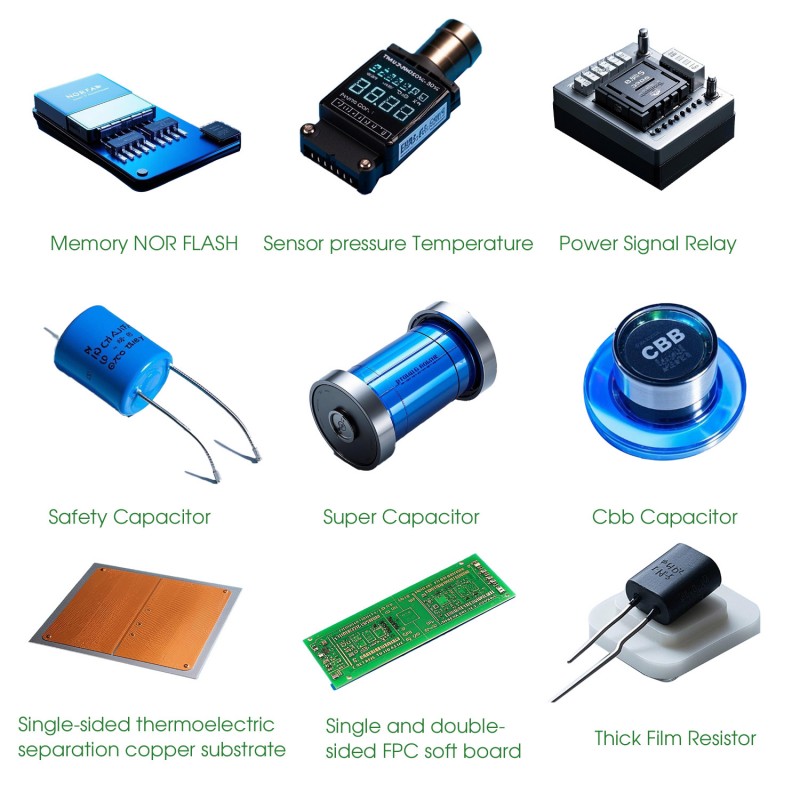
 English
English  Español
Español Português
Português русский
русский Français
Français 日本語
日本語 Deutsch
Deutsch tiếng Việt
tiếng Việt Italiano
Italiano Nederlands
Nederlands ภาษาไทย
ภาษาไทย Polski
Polski 한국어
한국어 Svenska
Svenska magyar
magyar Malay
Malay বাংলা ভাষার
বাংলা ভাষার Dansk
Dansk Suomi
Suomi हिन्दी
हिन्दी Pilipino
Pilipino Türkçe
Türkçe Gaeilge
Gaeilge العربية
العربية Indonesia
Indonesia Norsk
Norsk تمل
تمل český
český ελληνικά
ελληνικά український
український Javanese
Javanese فارسی
فارسی தமிழ்
தமிழ் తెలుగు
తెలుగు नेपाली
नेपाली Burmese
Burmese български
български ລາວ
ລາວ Latine
Latine Қазақша
Қазақша Euskal
Euskal Azərbaycan
Azərbaycan Slovenský jazyk
Slovenský jazyk Македонски
Македонски Lietuvos
Lietuvos Eesti Keel
Eesti Keel Română
Română Slovenski
Slovenski
What are the characteristics of thick film resistors?
2025-07-15
As a key component in electronic circuits, thick film resistors are widely used in various electronic devices with their unique manufacturing process and performance. Their characteristics are reflected in many technical advantages.

Structure and process determine basic performance. The resistor paste is printed on the ceramic substrate by screen printing, and the resistor film is formed by high-temperature sintering. The film thickness is usually 10-100 microns. This process enables the resistor to achieve a wide range of resistance values, ranging from a few ohms to millions of ohms, and the accuracy can be controlled within ±1% to ±5%, meeting the parameter requirements of different circuits.
High temperature resistance and outstanding stability. The ceramic substrate has good thermal conductivity, combined with the high temperature resistance of the metal oxide slurry, it can work stably in an environment of - 55℃ to + 125℃, with a temperature coefficient as low as ±100ppm/℃, and is less affected by temperature changes, suitable for high temperature working scenarios, such as automotive electronics, industrial control equipment, etc.
Strong power carrying capacity. With the same size, the power density of thick film resistors is higher than that of thin film resistors. The common 0805 package model can withstand 1/8W power, and the 2512 package can reach 2W. Through reasonable layout, it can meet the needs of medium and high power circuits and perform reliably in power modules and power amplifiers.
Cost and adaptability are more advantageous. The screen printing process is suitable for mass production, and the manufacturing cost is lower than that of thin film resistors, especially in circuits with medium precision requirements, with higher cost performance. At the same time, it has good moisture resistance and vibration resistance, can adapt to harsh working environments, and reduce failures caused by environmental factors.
In addition, thick film resistors can also be integrated into hybrid integrated circuits to achieve miniaturization and multifunctionality, providing support for the lightweight design of electronic equipment. These characteristics make it occupy an important position in consumer electronics, communication equipment, medical instruments and other fields, and become a common choice for electronic engineers.




